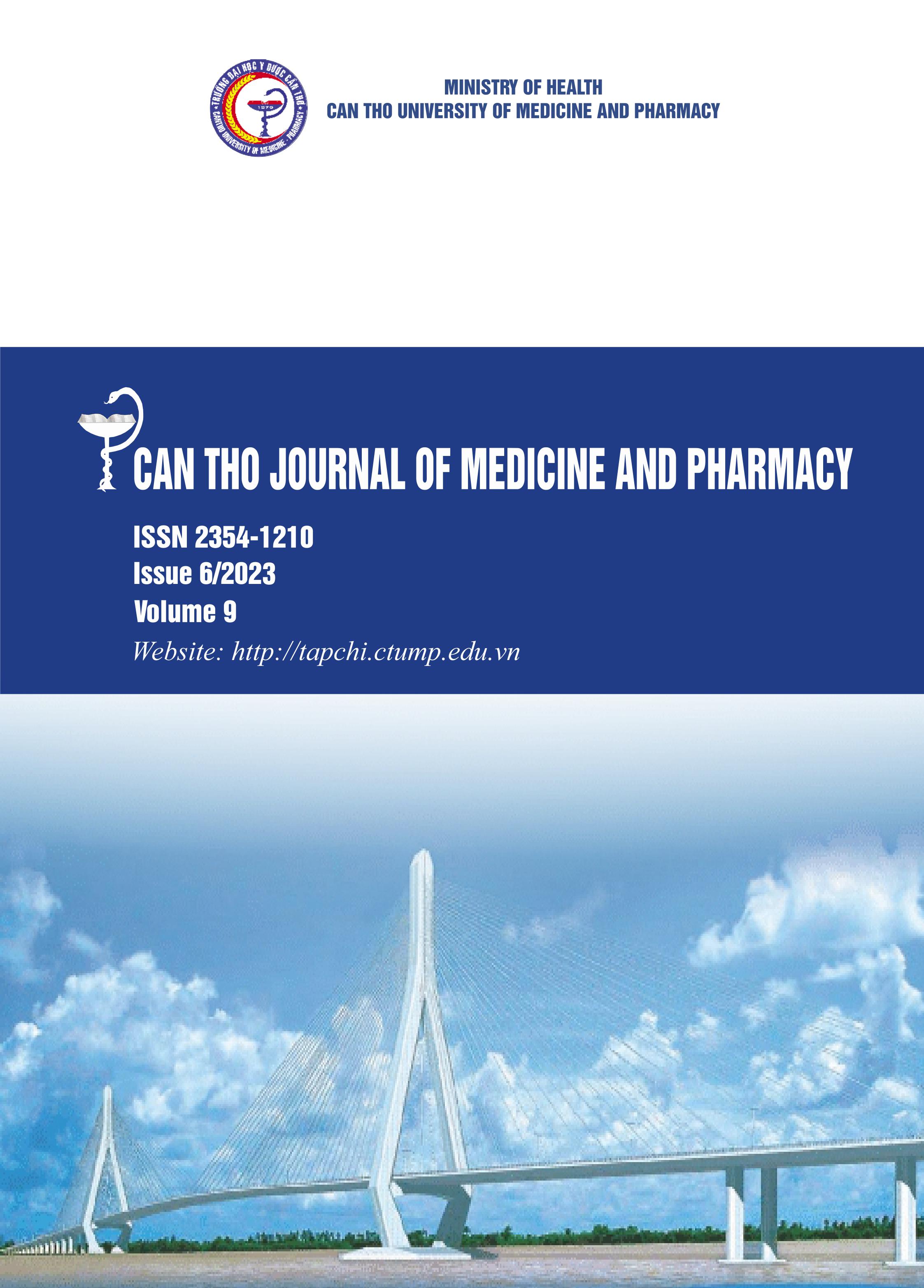PHYTOCONSTITUENTS AND IN VITRO ANTI-UROLITHIATIC ACTIVITY OF VARIOUS HYDROPHILIC EXTRACTS OF TERMINALIA CATAPPA LEAVES ON CALCIUM OXALATE CRYSTAL
Main Article Content
Abstract
Background: Medicinal plants play an important role in the alternative or complement therapy to manage of urinary stones at this time. Terminalia genus was proved anti-urolithiatic activity via in vitro inhibition of calcium oxalate formation. Among the samples, Terminalia catappa showed as a potential plants for this activity in India. Moreover, they were a common plant species in Vietnam and there was no research on this topic in our country. Objectives: To evaluate in vitro antiurolithiatic activity of Terminalia catappa leaves in Vietnam, through inhibition of calcium oxalate formation. In addition, moisture value, preliminary screening of the chemical composition and determination of tanninoid content of aqueous extract also were conducted. Materials and methods: Moisture content of herbs was conducted according to guidelines of 5th Vietnam pharmacopoeia, appendix 9.6. Qualitation of the phytochemical constituents of aqueous extract with appropriate reagents to confirm the presence of natural compounds via chemical reactions. Determination of tanninoid content of aqueous extract was evaluated by using oxidation-reduction titration method (Lowenthal assay) and skin powder method in instructing of appendix 12.6 from 5th Vietnam pharmacopoeia. Inhibitory effect of calcium oxalate formation of three hydrophilic extracts (45% ethanol, 96% ethanol and aqueous extracts) was confirmed by nucleation assay with cystone as a positive control. Results: Moisture content of medicinal plant was 11.625%. Terminalia catappa leaves contain the major phytochemical constituents such as flavonoids, tanninoids and saponins. The tanninoid content according to Lowenthal method and skin powder method were 10.88% and 10.70%, respectively. Therefore, the average tannin content was confirmed to be approximately 10.79%. Among the investigated samples, aqueous extract showed the best inhibitory activity of calcium oxalate crystal formation with an IC50 of 602.67 μg/mL when compared to cystone with IC50 423.05 μg/mL. Conclusions: The aqueous extract from Terminalia catappa leaves has been shown to be a promising source for anti-calcium oxalate crystals formation activity on experimental model. The anti-urolithic potential of Terminalia catappa leaves may be related to its major phytoconstituents.
Article Details
Keywords
Terminalia catappa, tanninoid, nucleation assay, calcium oxalate
References
2. Liu Y., Chen Y., Liao B., Luo D., Wang K. et al. Epidemiology of urolithiasis in Asia. Asian journal of urology. 2018. 5(4), 205-214. 10.1016/j.ajur.2018.08.007.
3. Lang J., Nwerendrula A., El-Zawahry A., Sindhwani P., and Ekwenna O.. Global Trends in Incidence and Burden of Urolithiasis from 1990 to 2019: An Analysis of Global Burden of Disease Study Data. Eur Urol Open Sci. 2022.35, 37-46. doi:10.1016/j.euros.2021.10.008.
4. Butterweck V., and Khan S.R.. Herbal medicines in the management of urolithiasis: alternative or complementary?. Planta medica. 2009.75(10), 1095-1103. https://doi.org/10.1055/s-00291185719.
5. Chanda S.V., Moteriya P., and Ram J.. Effect of decoction extracts of some medicinal plants on calcium oxalate crystallization. Asian Journal of Pharmaceutical and Clinical Research. 2016. 9, 70-76.
6. Ministry of Health. Vietnamese Pharmacopoeia V. Medicine Publishing House. 2018. Appendix
9.6, 12.6.
7. N.K.P. Phung. Methods for the extraction of organic compounds. Ho Chi Minh City National University Publishing House. 2007.
8. Wangiyana G.A.S., Sawaludin, Nizar W.Y., and Wangiyana W.. Tannin concentrations of Gyrinops tea with different leaf processing methods and addition of herbal medicine ingredients. AIP Conference Proceedings. 2019.2199 (1), 070012. https://doi.org/10.1063/1.5141326.
9. Abu Z.M., Tan J.S., Murugan P. et al. Investigation of potential anti-urolithiatic activity from different types of Musa pseudo-stem extracts in inhibition of calcium oxalate crystallization. BMC Complement Med Ther. 2020. 20, 317. https://doi.org/10.1186/s12906-020-03113-0.
10. Katiki L.M., Gomes A.C.P., Barbieri A.M.E., et al. Terminalia catappa: Chemical composition, in vitro and in vivo effects on Haemonchus contortus. Veterinary Parasitology. 2017. 246,118123. https://doi.org/10.1016/j.vetpar.2017.09.006.
11. H.D. Hung. Chemical constituents from the leaves of Terminalia catappa L. (Combretaceae)”. Vietnam J. Sci. Technol.. 2022. 60(4), 625–630.
12. Lokman M.A., Raimy N., Mat A.A., Marina H., and Wahid E.. Tannins Quantification in Terminalia catappa Leaves Extract and Antihelmenthic Potential Evaluation. Journal of Natural Products. 2014. 7, 98-103.
13. Santi S.S., Irawati F., and Prastica N.. Extraction of Tannin From Ketapang Leaves (Terminalia catappa Linn). Nusantara Science and Technology Proceedings. 2020. 196-199. https://doi.org/10.11594/nstp.2020.0530.
14. Rahim N.F.A. et al. Investigation on antiurolithiatic activity of aqueous extract of Ananas fruit (in-vitro). IOP Conf. Ser.: Earth Environ. Sci. 2021.736, 012057. https://doi.org/10.1088/17551315/736/1/012057.
15. Sujatha D., Singh K., Vohra M., Kumar K.V., and Sunitha S.. Antilithiatic Activity of phlorotannin rich extract of Sarghassum Wightii on Calcium Oxalate Urolithiais - In Vitro and In Vivo Evaluation. International Brazilian Journal of Urology. 2015. 41(3), 511-520. https://doi.org/10.1590/S1677-5538.IBJU.2014.0357.
16. Zeng X., Xi Y. and Jiang W.. Protective roles of flavonoids and flavonoid-rich plant extracts against urolithiasis: A review. Critical reviews in food science and nutrition. 2019. 59(13), 21252135. https://doi.org/10.1080/10408398.2018.1439880.


